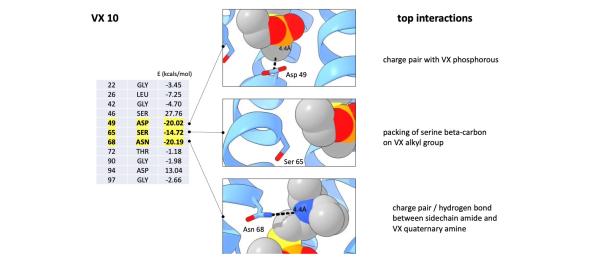
A VX detecting protein designed by the Koder Lab at CCNY.
City College of New York associate professor of physics Ronald Koder and his team at the Koder Lab are advancing the field of molecular detection by developing the first proteins that can detect a deadly nerve agent called VX in real-time and without false positives from insecticides.
VX is classified as a neurotoxin and an incredibly deadly chemical warfare agent that has been used in assassinations by some nations. It can cause permanent brain damage in those who survive exposure.
These potentially life-saving findings are published in the July 2022 edition of “Science Advances,” with lab member Jim McCann serving as the paper’s primary author. It outlines the design of two proteins that detect the neurotoxin by changing their shape in the presence of VX.
In collaboration with Douglas Pike and Vikas Nanda at Rutgers University, the CCNY team used a protein design program called ProtCAD to design 20 different proteins. According to Koder, the computer code was new and unlike anything the team had previously worked with, so it came as a bit of a surprise that two of their protein designs worked rather quickly.
“Having the first thing we tried with a small molecule actually just work was pretty great,” Koder said. “In that absence of VX, all of the negative charges repel each other and then the protein unfolds. And it really extends, almost like a stick. When the protein binds VX it wraps all the way around the molecule becoming much more compact.”
Previous detectors for this type of molecule often produced false positives from chemicals like insecticides. This new design can help prevent those misleading results, by scanning the entire molecular surface down to one hundred-millionth of a centimeter.
“We get this remarkable specificity because we're making contact with the whole molecule,” said Koder.
This work adds to a rapidly advancing field of biosensing technology used to detect the presence of incredibly small molecules called biomarkers.
The project was funded by the Air Force Civil Engineering Center/Defense Threat Reduction Agency in collaboration with The City University of New York, Clarkson University and Rutgers University.
About the City College of New York
Since 1847, The City College of New York has provided a high-quality and affordable education to generations of New Yorkers in a wide variety of disciplines. CCNY embraces its position at the forefront of social change. It is ranked #1 by the Harvard-based Opportunity Insights out of 369 selective public colleges in the United States on the overall mobility index. This measure reflects both access and outcomes, representing the likelihood that a student at CCNY can move up two or more income quintiles. In addition, the Center for World University Rankings places CCNY in the top 1.8% of universities worldwide in terms of academic excellence. Labor analytics firm Emsi puts at $1.9 billion CCNY’s annual economic impact on the regional economy (5 boroughs and 5 adjacent counties) and quantifies the “for dollar” return on investment to students, taxpayers and society. At City College, more than 16,000 students pursue undergraduate and graduate degrees in eight schools and divisions, driven by significant funded research, creativity and scholarship. CCNY is as diverse, dynamic and visionary as New York City itself. View CCNY Media Kit.
Laura Baisas/Jay Mwamba
p: 212.650.7580
e:
jmwamba@ccny.cuny.edu